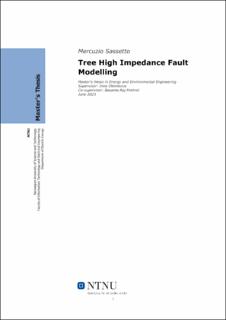| dc.description.abstract | Europe will be subject in the coming years to major changes in the energy sector, according to the plan called “REPowerEu” the goal is to reduce greenhouse gas emissions by 55% by 2030 and achieve climate neutrality by 2050. To meet these goals, it is essential to increase the adoption of renewable energy sources in the areas of power generation, industry, and transportation. This future scenario foresees an increasingly complex power system, which makes it essential to invest in the modernization of the electrical grid infrastructure and its management to ensure proper, stable, and cost-effective operation.
This thesis work is placed under the topic of digitization of the electrical system with an emphasis on supporting the development of artificial intelligence-based methodologies for electrical fault detection. A specific type of fault affecting power distribution lines is studied, the high impedance fault caused by the contact of a live shaft with phase conductors. This fault poses numerous problems for local power distributors due to the difficulty in its detection by protective devices and because of its danger to human health and electrical infrastructure as it can also lead to serious forest fires. The development of these new fault detection methodologies often struggles with the lack of datasets: faults are not very frequent, and measurements are rarely made accessible; field experiments for generating data are very expensive. A way to bypass these difficulties is to create models that simulate the characteristics of faults, this is precisely what was done within this thesis.
A model for the single-phase fault caused by vegetation contact will be exposed, it provides the fault current trend as a function of moisture content and line voltage, thus enabling fundamental data generation for the training phase of fault detection algorithms based on artificial intelligence. The model is shown and developed for a single vegetation species, but the same methodology can be applied to different types of trees. | |
